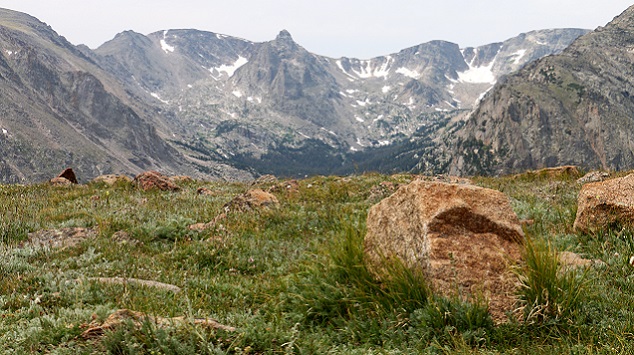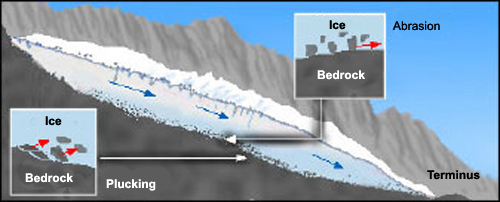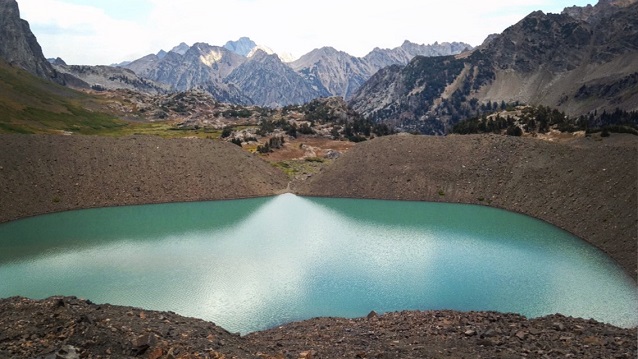
NPS Photo/M. Reed
Glaciers can sculpt and carve landscapes by eroding the land beneath them and by depositing rocks and sediment.
Glacial Erosion

Courtesy of Rocky Mountain National Park
Glaciers can shape landscapes through erosion, or the removal of rock and sediment.
They can erode bedrock by two different processes:
- Abrasion: The ice at the bottom of a glacier is not clean but usually has bits of rock, sediment, and debris. It is rough, like sandpaper. As a glacier flows downslope, it drags the rock, sediment, and debris in its basal ice over the bedrock beneath it, grinding it. This process is known as abrasion and produces scratches (striations) in bedrock surface.
- Plucking: The bedrock beneath a glacier often has cracks in it that were there before it was ever covered in ice. These cracks may grow beneath the glacier, and eventually join with one another. When this happens, entire chunks of rock can break off and be carried away by the ice.
Glaciers can also erode sediment. This can happen in a number of ways, including downward creep of the glacier ice into the sediment, freezing of water in sediments to the base of the glacier, and squishing the sediment around beneath the weight of the ice.
Glacial Deposition

NPS Photo/Reba McCracken
Glacier can also shape landscapes by depositing rocks and sediment. As the ice melts, it drops the rocks, sediment, and debris once contained within it. Ice at the glacier base may melt, depositing Glaciers can also move sediment from one place to another when it flows over sediment beds.
Additionally, when glaciers ice melts, the water it generates can move and rework sediment. This is called glacial outwash.
To learn more about glaciers, glacier features, and glacial landforms, see the Glaciers & Glacial Landforms Page.
Last updated: February 9, 2018
